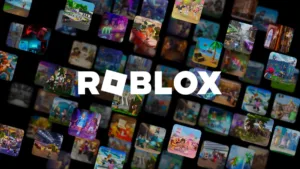By Andy Pearch, Director and Co-Founder, MediaSense
The technology that powers our lives has put the media landscape into a state of constant flux and has compelled brands to ask big questions of their operating models.
Technology also promises better information and accountability, and brands need to develop new media measurement systems to succeed against a wave of extremely agile competitors. Media transformation and media performance measurement are now top priorities for many brands and are both fundamental to our new partnership with ISBA.
Last summer we interviewed CMOs and Agency CEOs for our yearly Media 2020 research and found that 66% of brands are reviewing internal operations and 61% of brands are reviewing agency models. We also discovered that the advancement of media best practice is being held back by the industry’s failure to bring quality and standards to measurement.
The Media 2020 study cited measurement as the number one issue keeping brands awake at night. In fact, measurement has been problematic since the survey started in 2015 but concerns around media measurement are now greater than ever before.
46% of survey respondents agreed that, despite having more data on everything, they actually know less about their media performance (an uptick of 11 basis points on the 2017 survey). Whereas 80% see cross-device attribution as a measurement priority, 60% believe that self-interest is holding back the evolution of cross-media measurement.
The issues around measurement are complex and varied with genuine concern about the reliability of digital media metrics and the effectiveness of many prevailing advertising formats themselves. Recently, advertisers and the trade bodies that represent them have turned their focus onto online advertising ecosystems, their curation and measurement.
From the WFA-driven Global Alliance for Responsible Media (GARM) tackling harmful online content funded by potential ad spend to ISBA’s launch of Origin, a UK cross measurement programme, the desire for collective change is very real.
Data privacy concerns will open up new alternatives for brands
At the same time, we are seeing a move towards protecting consumer privacy as data concerns have come to the fore. Only last week ISBA themselves called on the industry to rebuild trust in advertising with a five-point plan. The sheer amount of consumer data generated is making a marketer’s jobs easier in some ways, yet it’s becoming harder to manage and leverage customer data.
Programmatic advertising as we know it faces a critical moment with the imminent close of the third-party cookie ecosystem which powers most digital trading. As a result of this, data-driven strategies will need be reassessed as many data providers will no longer be able to ‘stitch together’ user behaviour insights to form audience segments.
Through our Media 2020 lens, we saw that programmatic trading has lost its lustre. In 2017 22% of respondents saw programmatic trading as a critical media capability, whereas in 2019 that figure slipped back to only 6%. It’s fair to say programmatic buying has so far under-delivered against its promise and needs to evolve beyond accumulating targeted audience segments to serving more relevant content at the right time.
Brands and agencies are also struggling to effectively use paid social for branding activity. Most brands report low impact metrics for video inventory, but rather than investing less in social, brands have been encouraged to shift their focus on to more favourable metrics that make the numbers “sing”.
Although the end of the cookie appears to play into the hands of the walled gardens, it is also inevitable that brands will look to more effective alternatives to reach their audiences, perhaps through content partnerships and deeper relationships with publishers, by looking behind the numbers and forming common-sense perspectives from incomplete data.
A better, cleaner ecosystem through brand and agency partnerships
An advertising ecosystem with fewer intermediaries, cleaner data pipes, tighter controls on ad bombardment and less scope for bad actors is genuinely in sight, even though progress will be difficult and will take time. Like peeling an onion, uncovering one truth leads to further discoveries, requiring a change in tack, as ISBA’s Programmatic Supply Chain Study is demonstrating.
And not everyone shares the same requirements — understandably FMCG brands long for cross-media reach and frequency measurement, but this is irrelevant for the vast majority of DTC brands.
First-party data modelling, econometric modelling and digital attribution are all valid approaches to measurement but are often concurrent and provide different answers to the same questions. As one of our Media 2020 research interviewees stated ‘We’ve got all these non-connected pieces and just as a group of marketing leaders, media leaders, we’re very aware of where the failures are in each one of those ‘things’.
Our partnership with ISBA has been created to help advertisers
best tackle their media pain points and to realise more value throughout the
media ecosystem, especially around media transformation and digital
performance measurement. We’ll be working closely with advertisers to equip
brands with insights and practical advice on how to navigate the complex media
landscape and to measure the right things for their business.
Resolving the industry’s measurement issues is taking considerable time, but
it’s a critical and shared endeavour. This is also an agenda that brands and their
agencies can agree on and fix together. With strong partnerships, measurement
will move forward.









